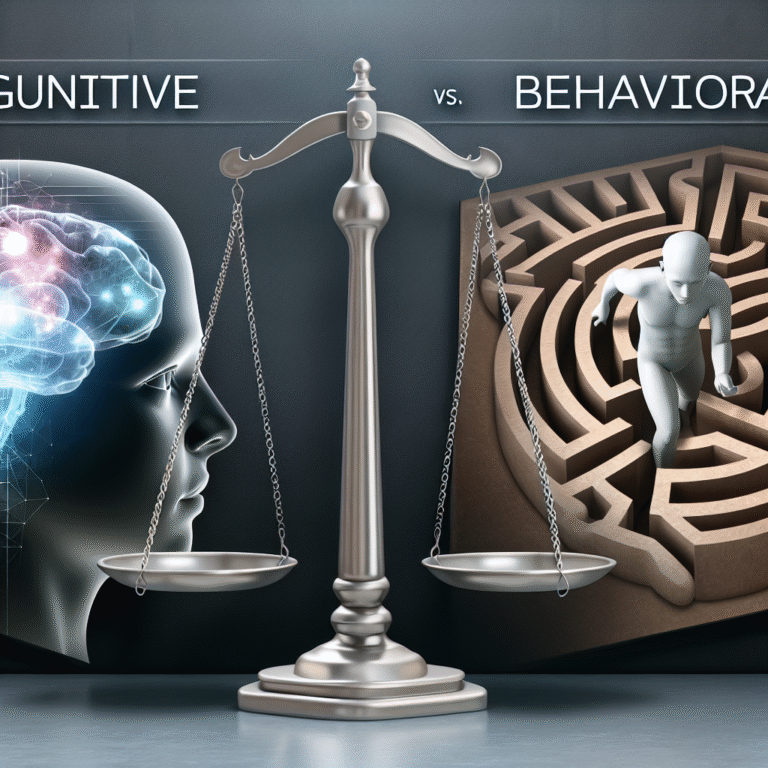
From Theory to Practice: Implementing Behavioral Psychology Principles in Organizational Behavior for Ultimate Success
Introduction
In today’s dynamic workplace, understanding the psychological underpinnings of behavior is not just a strategic advantage—it’s essential for any organization aiming for sustainable success. The intersection of behavioral psychology and organizational behavior offers profound insights into enhancing workplace productivity, employee satisfaction, and overall organizational health. The concept of "From Theory to Practice: Implementing Behavioral Psychology Principles in Organizational Behavior" is not merely an academic exercise; it’s a roadmap for transforming theories into actionable strategies that can redefine the modern workplace.
As we explore this transformative journey, we will share unique insights, practical case studies, and actionable steps to help organizations apply these principles effectively. This discussion will serve not only as a guide for leaders seeking to implement behavioral psychology in their strategies but also as a source of inspiration for employees wanting to thrive in an optimized work environment.
Understanding Behavioral Psychology
What is Behavioral Psychology?
Behavioral psychology, often termed behaviorism, focuses on the observable and measurable aspects of human behavior. It emphasizes the role of environmental stimuli in shaping behaviors, positing that all behaviors are acquired through conditioning processes. By implementing behavioral psychology principles within organizational behavior, organizations can develop targeted approaches that drive desired employee behaviors resulting in better performance.
Why It Matters in Organizational Settings
Understanding and applying behavioral psychology principles is crucial for several reasons:
- Enhancing Employee Motivation: Knowing what motivates employees can lead to better engagement strategies.
- Improving Communication: Effective communication techniques stem from understanding how individuals process and react to information.
- Creating a Positive Work Culture: Insights into human behavior can help cultivate environments that encourage collaboration, creativity, and productivity.
Principles of Behavioral Psychology Applicable to Organizations
1. Conditioning and Reinforcement
Case Study: Sales Training Program at XYZ Corp
XYZ Corp implemented a sales training program that utilized operant conditioning. They rewarded employees for reaching their sales targets with immediate bonuses and recognition.
Analysis: By leveraging positive reinforcement, XYZ Corp saw a 30% increase in sales performance within three months. This exemplifies how conditioning principles translate into organizational behavior improvements.
2. The Role of Feedback
Behavioral psychology underscores the importance of feedback as a critical component in modifying behavior.
Example: Regular feedback sessions in organizations can enhance performance and job satisfaction.
Case Study: Agile Project Management at ABC Inc.
ABC Inc. adopted a feedback loop within their agile project management framework, allowing team members to give and receive feedback weekly.
Analysis: This practice fostered a culture of continuous improvement and accountability, leading to a 25% improvement in project delivery times.
3. Understanding Motivation
Theories such as Maslow’s Hierarchy of Needs and Herzberg’s Two-Factor Theory provide frameworks for understanding what drives employee performance.
Table 1: Overview of Motivation Theories
| Theory | Core Elements |
|---|---|
| Maslow’s Hierarchy | Physiological, Safety, Belonging, Esteem, Self-Actualization |
| Herzberg’s Two-Factor | Hygiene Factors (e.g., salary) & Motivators (e.g., recognition) |
Implementation Example: Companies can design rewards systems that address both hygiene factors and motivators for a more engaged workforce.
4. The Importance of Social Proof
Social psychology principles highlight that individuals tend to conform to behaviors exhibited by others in their environment.
Case Study: Peer Mentorship at DEF Ltd.
DEF Ltd. established a peer mentorship program that paired new hires with seasoned employees.
Analysis: This initiative led to increased retention and accelerated onboarding, illustrating the power of social proof in shaping workplace culture.
Strategies for Implementing Behavioral Psychology Principles
A. Behavior Modification Techniques
- Set Clear Definitions of Desired Behaviors: Organizations must clearly define the behaviors they wish to encourage.
- Use Reinforcement Schedules: Implement varying schedules of reinforcement (e.g., fixed, variable) to maintain employee interest and motivation.
B. Developing a Feedback Culture
- Create Structures for Continuous Feedback: Move beyond annual reviews to ongoing conversations.
- Train Leaders to Deliver Effective Feedback: Equipping leaders with the skills to provide constructive feedback fosters a culture of growth.
C. Cultivating an Environment that Fosters Motivation
- Assess Employee Needs: Regularly survey your workforce to understand their motivations.
- Design Reward Systems: Tailor rewards that resonate with what matters most to your employees, aligning with key motivational theories.
D. Utilize Peer Influence
- Implement Peer Recognition Programs: Celebrate collective achievements to leverage social proof.
- Encourage Collaborative Projects: Form teams that mix experience levels to foster knowledge sharing.
Conclusion
As organizations navigate the complexities of the modern workforce, the application of behavioral psychology principles becomes increasingly pertinent. From Theory to Practice: Implementing Behavioral Psychology Principles in Organizational Behavior is more than a theoretical framework; it forms the backbone of successful organizational initiatives. By understanding and applying these psychological principles, organizations can create vibrant work environments that drive performance, enhance employee engagement, and foster innovation.
Ultimately, the goal is to create not just a productive workforce but a thriving community where individuals are motivated, engaged, and empowered to excel. As you reflect upon the insights discussed, consider how you can apply them within your organization to experience breakthrough results.
FAQs
1. How can I start implementing behavioral psychology principles in my organization?
Begin by assessing your organizational culture and identifying behaviors you’d like to encourage. Develop plans for feedback and reinforcement strategies tailored to your workforce.
2. What are some common challenges faced when applying these principles?
Challenges can include resistance to change, inadequate training for management, and a lack of understanding within the organization about behavioral psychology.
3. How do I measure the effectiveness of these implementations?
Establish key performance indicators (KPIs) linked to desired behaviors, conduct employee surveys, and track performance metrics over time to gauge effectiveness.
4. Is it necessary to hire a behavioral psychologist for implementing these principles?
While hiring a professional can enhance the process, organizations can effectively implement many strategies by training current leaders and employees in behavioral psychology principles.
5. Can small organizations benefit from these principles?
Absolutely! Small organizations often have greater flexibility to implement changes and create a strong culture that embodies behavioral principles can lead to significant improvements in employee satisfaction and productivity.
In conclusion, harnessing the power of behavioral psychology is essential for organizations aiming to thrive in a competitive landscape. As you embark on this journey from theory to practice, remember that the key to success lies in continuous learning and adaptation.















